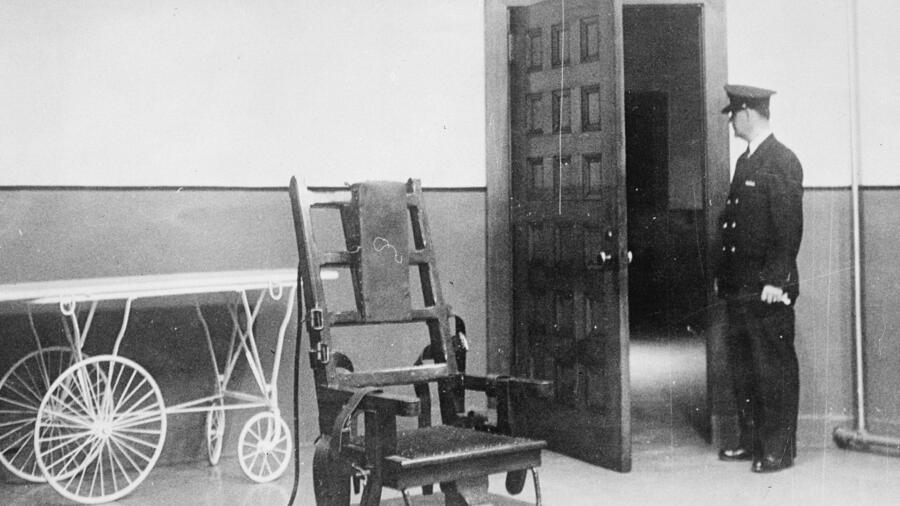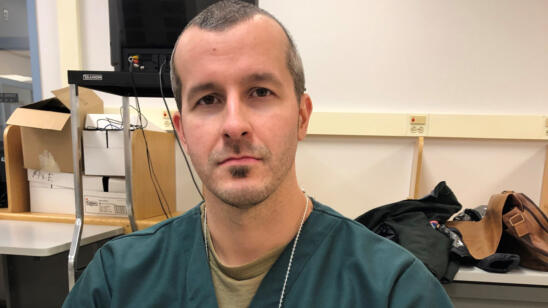Warning: The following contains disturbing descriptions of violence. Reader discretion is advised.
Death is a universal experience. But for those sentenced to die by execution, death is often a specific date and time, a countdown to one’s final moments. Before the act of taking a death row prisoner’s life, whether by lethal injection, the gas chamber or historically another way, the condemned are given an opportunity to speak their last words.
“The modern U.S. practice, which may vary to various degrees by state, developed out of a long practice going back at least hundreds of years, probably longer,” Jeff Kirchmeier, a law professor at the City University of New York School of Law and author of Imprisoned by the Past: Warren McCleskey and the American Death Penalty, tells A&E True Crime. “I don’t think there is any one recognized origin of the practice. But it definitely connects back to when executions were done in public, especially tracing the practice back through the U.S. to England from where we developed most of our laws.”
[Stream episodes of Killer Cases in the A&E App.]
Allowing last words as part of the execution, according to Kirchmeier, may have made things more orderly, with the opportunity preventing the condemned from feeling the need to otherwise yell things out.
“There was probably a religious aspect of the tradition, too, giving the condemned an opportunity to repent before going to the next world,” says Kirchmeier. “Their statements would also warn others watching of the dangers of various vices.”
Many facing execution often have an opportunity to ask for forgiveness from the family of the victim and their own families. Others become defiant at the end or invoke humor in an unsettling way.
One theory, published in Frontiers in Psychology and explained in a 2016 article on The Cut, suggests that someone facing imminent death “…might not necessarily express primarily sad or scared sentiments. Their mind might, in a sense, be working in overdrive to protect them from the fear evoked by their awful situation and could be nudging them in the other direction…toward positivity.”
A&E True Crime takes a look at the final statements of five executed criminals.
Wallace Wilkerson
In 1877, the Territory of Utah sentenced Wallace Wilkerson to death for shooting and killing William Baxter after a card game they were playing turned into a heated dispute. Wilkerson, a stockman and military drummer who confessed to the crime, chose the firing squad over decapitation or hanging.
On May 16, 1879, the day of his execution, Wilkerson sat in a chair, held a cigar and declined to be blindfolded. “I give you my word. I intend to die like a man, looking my executioners right in the eye,” he said moments before the firing squad received the signal.
After the initial stream of bullets missed Wilkerson’s heart and failed to kill him, he jumped from the chair and cried out, “Oh my God! Oh my God! They have missed!”
He struggled to breathe for 15 to 27 minutes, depending on different witness accounts, before bleeding to death.
John Arthur Spenkelink
In February 1973, John Arthur Spenkelink picked up 45-year-old hitchhiker, Joseph J. Szymankiewicz, in Tallahassee, Florida. They went to a nearby hotel where Spenkelink claims he shot and killed Szymankiewicz in self-defense, after the hitchhiker stole his money and then allegedly sexually assaulted him. Later that same year, a jury found Spenkelink guilty of first-degree murder and sentenced him to death.
During his time on death row, Spenkelink claimed he was only being executed because he couldn’t afford better legal representation. His last words mirrored these sentiments: “Capital punishment,” he said before being electrocuted on May 26, 1979. “Them without the capital get the punishment.”
Spenkelink made headlines as the first convicted criminal to be executed in Florida after capital punishment was reinstated in 1976.
Aileen Wuornos
Aileen “Lee” Wuornos, a sex worker convicted of killing seven men in wooded areas off Highway I-75 in Florida and the first woman ever profiled by the FBI as a serial killer, died by lethal injection on October 9, 2002. During her time on death row, Wuornos’ mental health rapidly declined. Numerous attorneys appealed to the courts on her behalf, citing her bizarre and delusional behavior.
[Stream an episode of First Blood about Aileen Wuornos in the A&E App.]
While in the death chamber, Wuornos gave one final ominous message: “I’d just like to say I’m sailing with the rock, and I’ll be back like Independence Day, with Jesus June 6. Like the movie, big mother ship and all, I’ll be back.” Many experts believe her last words were indicative of her deteriorating mental state.
“A large percentage of people on death row have mental illness, brain damage and other issues that may lead to what we see as strange last statements,” Kirchmeier explains. “Those unusual statements often get the most attention in the press as showing the condemned was evil, but they are mainly signifying that we are executing damaged human beings.”
Douglas Roberts
Douglas Roberts claimed he was “stoned out of his mind” when he robbed and killed Jerry Velez in San Antonio, Texas on May 18, 1996. In a videotaped interview with police, Roberts gave a complete confession stating that he repeatedly stabbed Velez and then ran over the victim’s body with his car. A jury convicted Roberts of capital murder in January 1997.
“I’ve been hanging around this popsicle stand way too long. I want to tell you all. When I die, bury me deep, lay two speakers at my feet, put some headphones on my head and rock ‘n’ roll me when I’m dead. I’ll see you in heaven someday,” Roberts said with a smile seconds before the lethal drugs were administered on April 20, 2005.
Juan Martin Garcia
On September 17, 1998, gang member Juan Martin Garcia fatally shot Hugo Solano, a Christian missionary who had just moved from Mexico to Houston, during a robbery. Garcia’s fatal crime yielded just $8. He was convicted of capital murder and received the death penalty on June 21, 2000.
Kirchmeier says many see last statements as also serving the purpose of forcing the condemned to reflect upon their crimes and lives. Often, these statements include words of repentance and regret.
[Stream Invisible Monsters: Serial Killers in America in the A&E app.]
“Such statements meet our expectations of what last words should be, and such statements may provide some solace to those harmed,” says Kirchmeier.
On October 6, 2015, moments before being executed, Garcia used his final words to apologize to Solano’s widow and children and express his remorse.
“The harm that I did to your dad and husband… I hope this brings you closure,” he said, according to the Associated Press. “I never wanted to hurt any of you all.”
Related Features:
Cooking Up the Last Meals of Death Row’s Most Notorious Inmates
What Was Ted Bundy’s Execution Like?
John Wayne Gacy’s Execution: What Were the Serial Killer’s Final Days Like?


